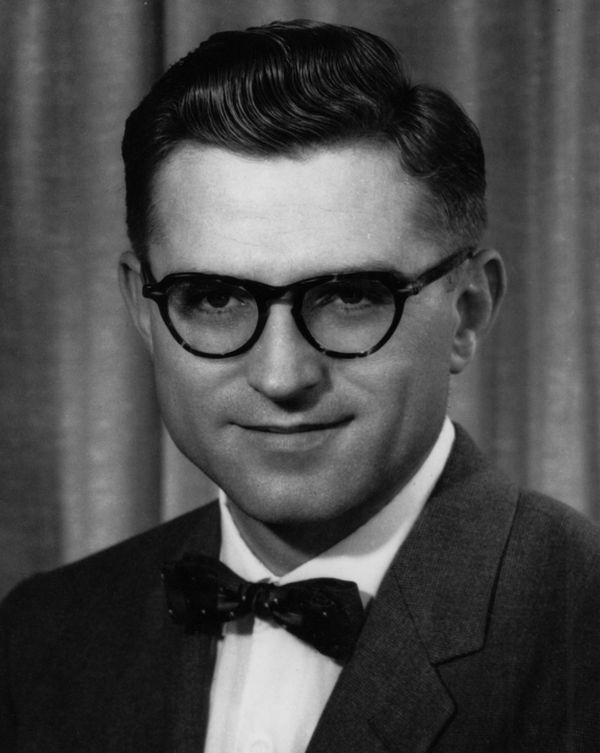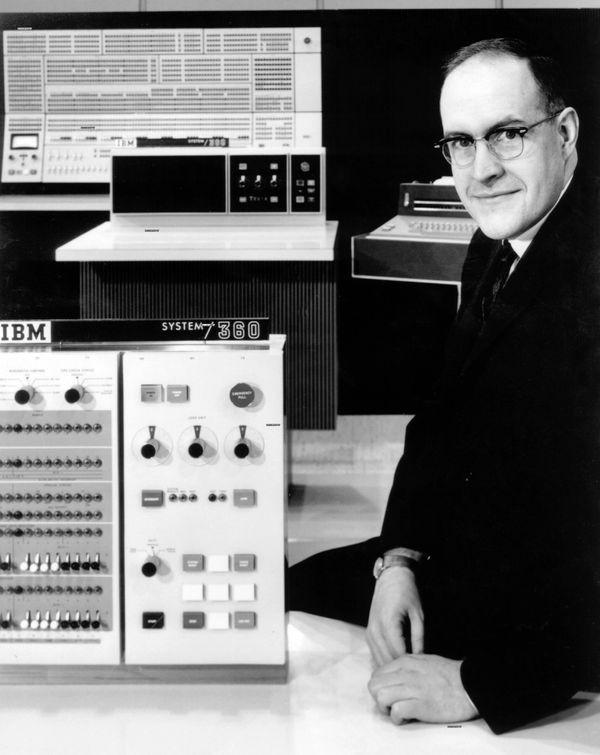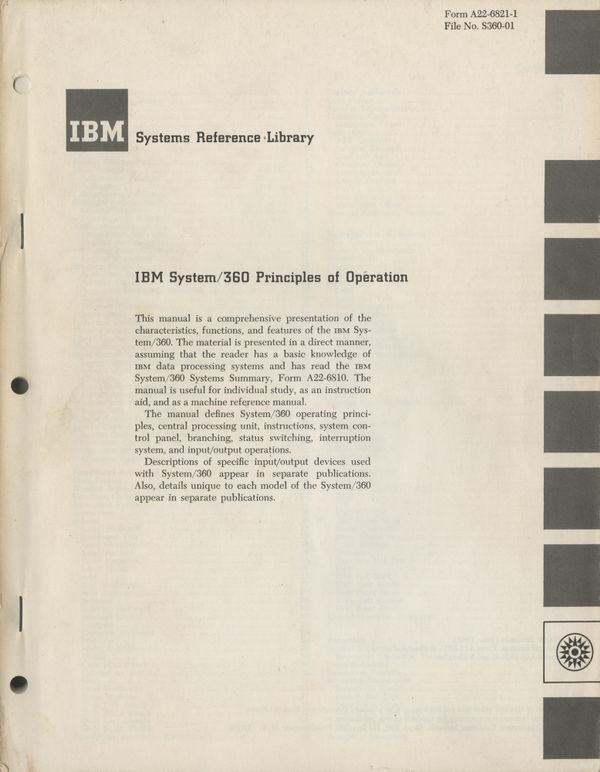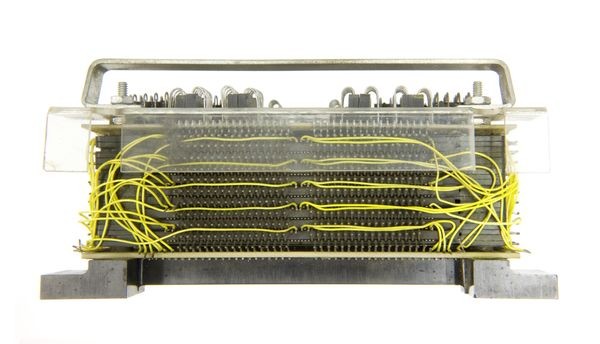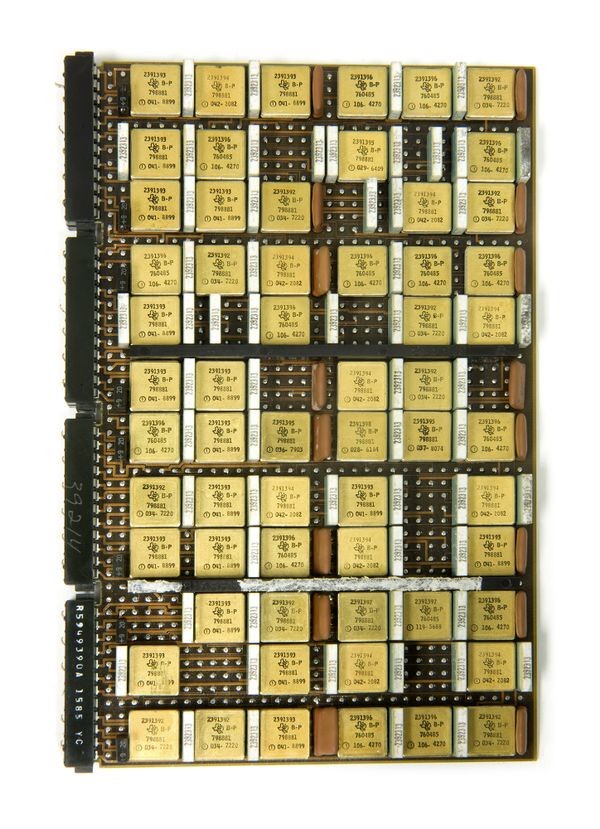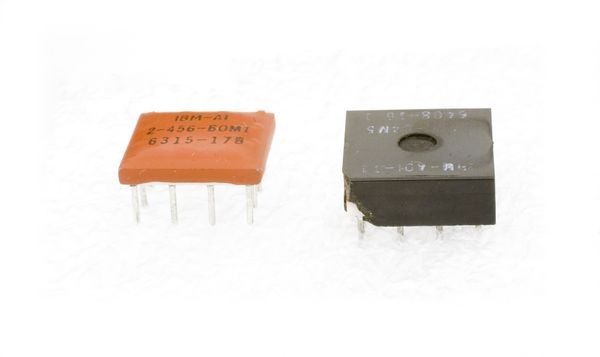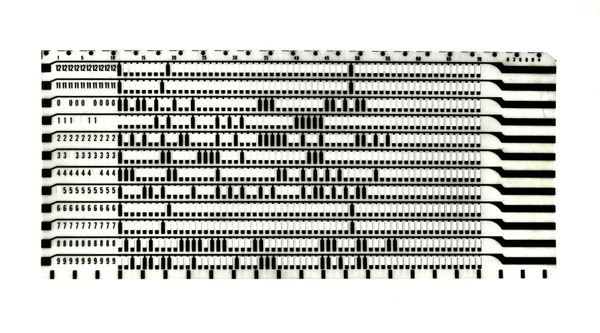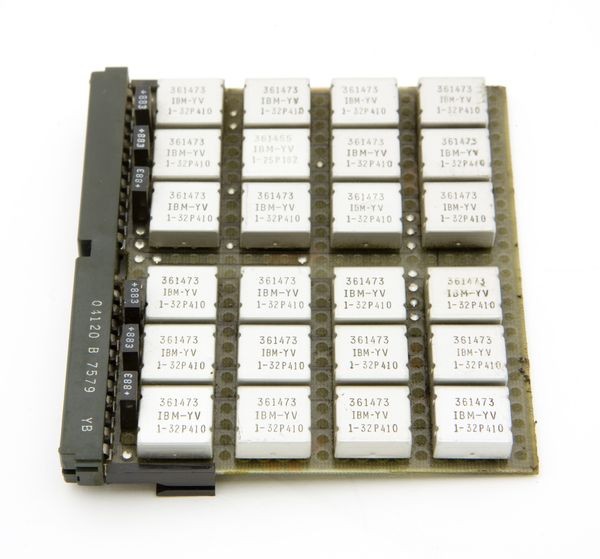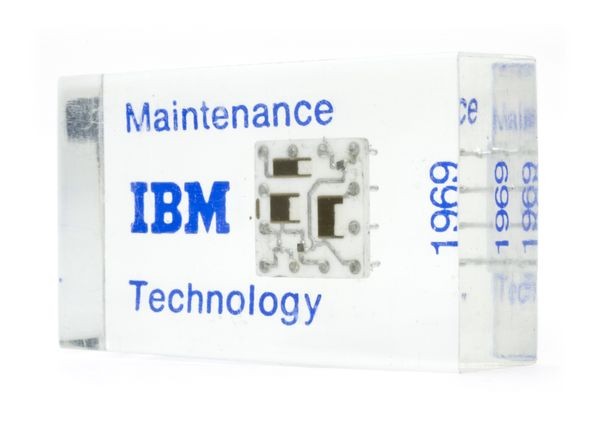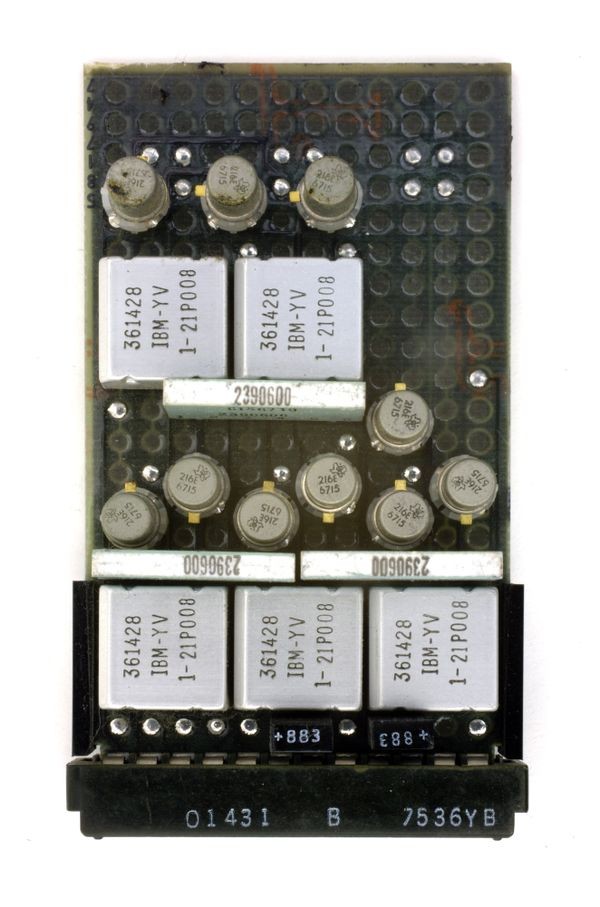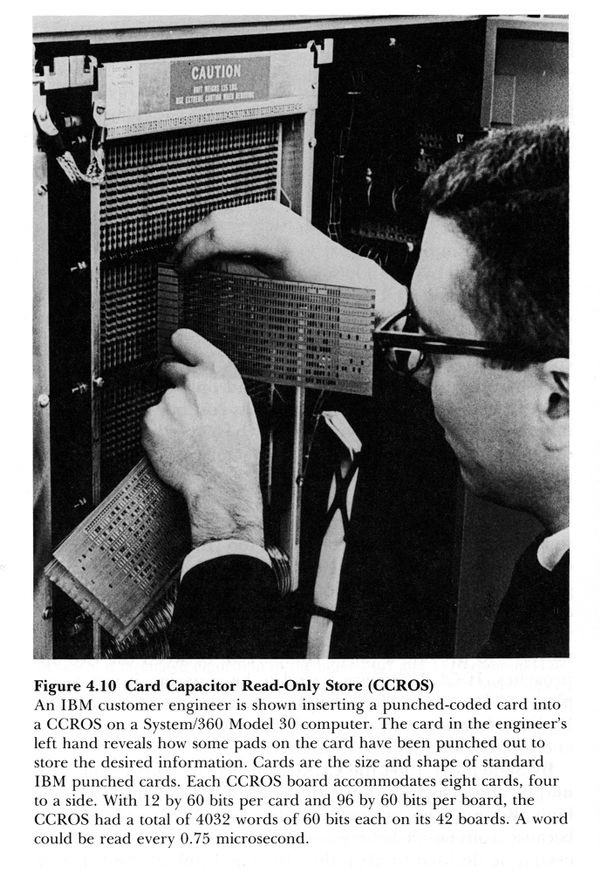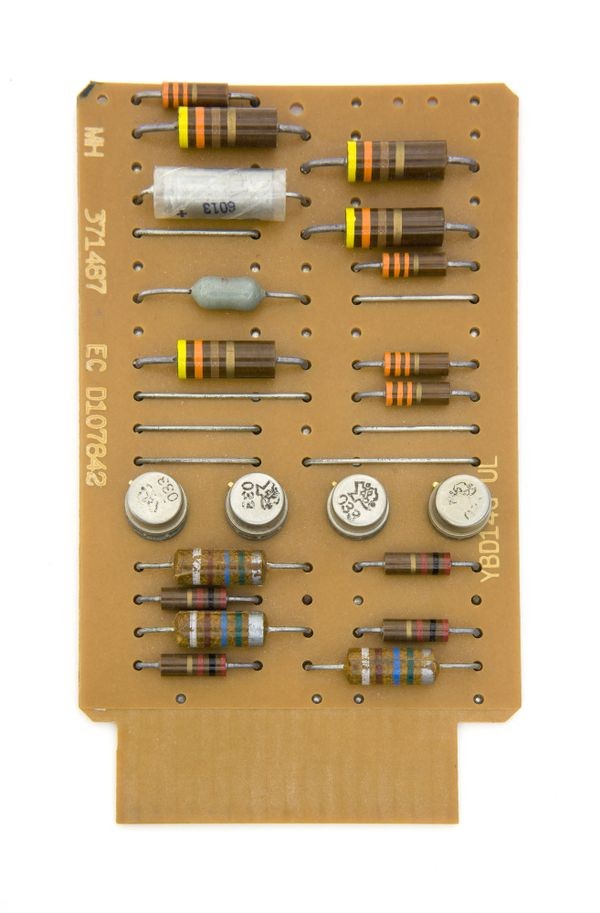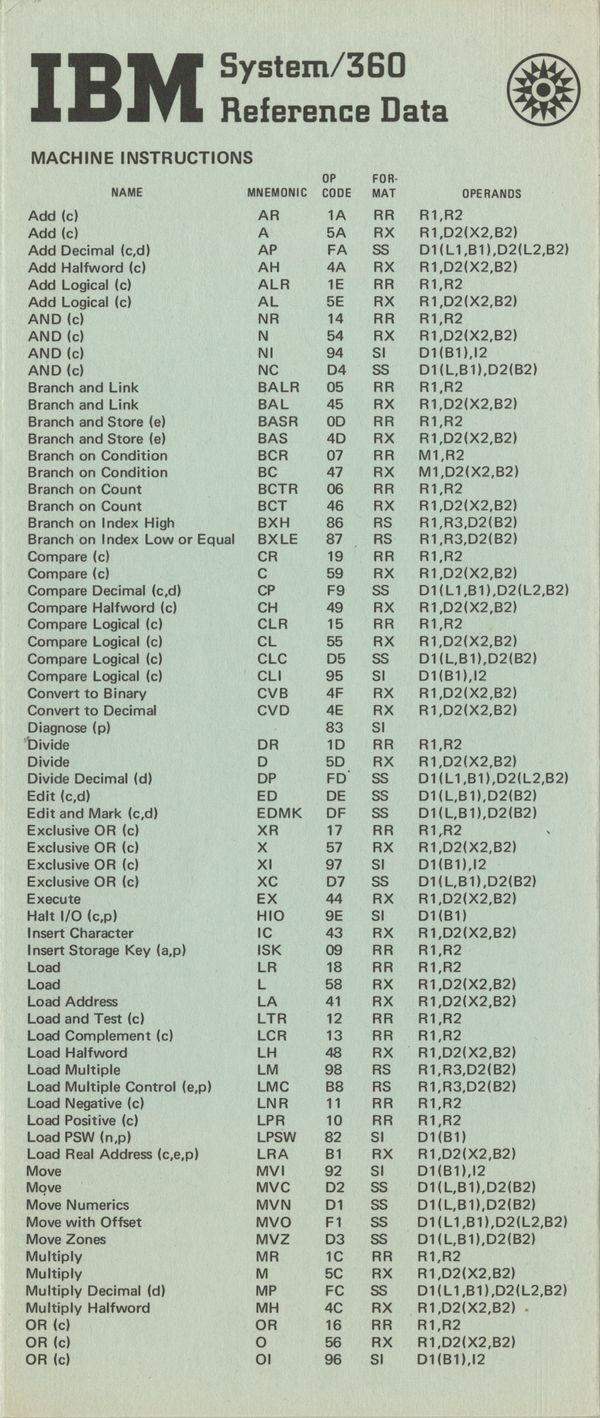Inside System/360
Gene Amdahl
In 1960, IBM’s Gene Amdahl was named manager of architecture for their new System/360 family of mainframe computers. Amdahl’s challenge was to design a family of computers that would support a range of speeds and peripherals yet run the same software. The System/360, announced in April of 1964, became IBM's most profitable product and Amdahl a legendary figure in the industry. Amdahl’s initial S/360 architecture influenced generations of later IBM mainframes, including some available today.
The Software
System/360’s software was also ambitious. Variations of one operating system, OS/360, were supposed to run on all the models.
But OS/360 was hard to write -- especially the complex “multiprogramming” versions that ran several programs at once -- and it was late. Three special OSs had to be created for the smallest machines.
Fred Brooks, IBM engineer
Brooks is legendary for having rescued IBM’s floundering software-development program for the first System/360 computers. When he stepped in, over 1,000 programmers were working on the operating system.
View Artifact DetailIBM System/360 Principles of Operation, 1st edition
Principles of Operation detailed the structure, characteristics, and use of all models in the System/360 line. It became a classic for its separation of “architecture” (basic design of the computer) from the implementation details of any particular model.
View Artifact DetailThe mythical man-month : essays on software engineering
This popular book on software engineering observed that adding people to a late project almost always makes it later. Brooks wrote it in response to IBM-chief Tom Watson’s asking why programming projects were so hard to manage.
View Artifact DetailThe Hardware
In addition to the underlying principle of compatibility, System/360 incorporated many hardware advances, including options for very large main memories and Solid Logic Technology (hybrid integrated circuits).
It also used microprogramming, software that implemented some complicated instructions that would otherwise need special hardware – key to making the smaller models do everything.
Magnetic Core Stack, IBM System/360 Model 91
The fastest of the early 360s, the Model 91 had a 60 nanosecond cycle time and used both parallelism and pipelining. Only 15 were built. The first, for NASA, had 2 megabytes of core memory in stacks like this.
View Artifact DetailErich Bloch, IBM engineer
Bloch began developing Solid Logic Technology (SLT) miniature hybrid circuits in 1961, before IBM launched the System/360 project. SLT circuits were critical to System/360s success.
View Artifact DetailIBM SLT manufacturing step
In this fixture, oversized resistors on SLT wafers were automatically trimmed by abrasive blasting to obtain the correct resistance.
View Artifact DetailSolid Logic Technology (SLT) module cards
Sealed SLT modules and other components were soldered onto printed-circuit cards that could be easily inserted and removed by field technicians.
View Artifact DetailSolid Logic Technology (SLT) wafers [manufacturing-step examples]
In System/360, SLT modules replaced discrete-transistor circuits. They were “hybrid,” not integrated circuits — separate transistors and diodes combined with printed resistors on a ½” square ceramic substrate. Complex to manufacture, they were faster and used less power than discrete-transistor circuits.
View Artifact DetailCard from a Card-Capacitor Read-Only Store (CCROS), System/360 Model 30
The CCROS held microcode in Model 30s. Microcode could be easily changed by swapping one punched card for another with a different hole pattern. That allowed a Model 30 to emulate differently configured IBM 1401 computers — important for customers considering upgrading from a 1401.
View Artifact DetailTransformer Read-Only Storage (TROS) module
TROS held “microcode” instructions that allowed Model 40 and other smaller System/360 computers to implement some complicated instructions in software without the expensive hardware used in bigger machines.
View Artifact DetailMagnetic Core Plane, IBM System/360 Model 65
Model 65 main memory was almost 150 times faster than Model 30 memory. This plane from another system area contains 1,536 magnetic memory cores.
View Artifact DetailSolid Logic Technology (SLT) module cards
Sealed SLT modules and other components were soldered onto printed-circuit cards that could be easily inserted and removed by field technicians.
View Artifact DetailSolid Logic Technology (SLT) circuit [Partially completed SLT module in Lucite block]
The tiny chips with three connections are individual transistors. The large dark areas are printed resistors.
View Artifact DetailSolid Logic Technology (SLT) module cards
Sealed SLT modules and other components were soldered onto printed-circuit cards that could be easily inserted and removed by field technicians.
View Artifact DetailIBM Card Capacitor Read-Only Store (CCROS)
Changing a punched card in a System/360 Model 30 changed the microprogramming and therefore its overall capabilities. Changes could be done even in a customer’s office.
View Artifact DetailStandard Modular System (SMS) card (logic module)
Even after SLT circuits were introduced, conventional discrete-transistor SMS components were still used in lower-speed applications. SMS was bulkier, but less expensive for the same function.
View Artifact DetailIBM System/360 and System/370 reference cards
Technicians and operators carried cards with commonly needed information culled from the many reference manuals for each computer. A “green card” in your shirt pocket announced that you were an assembly-language programmer.
View Artifact Detail